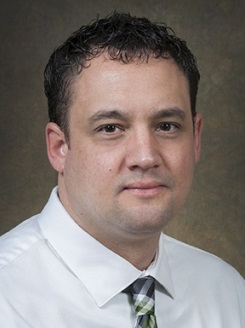Researchers from Wayne State University and the National Institutes of Health’s Perinatology Research Branch in Detroit reported the results of an important study indicating that the human placenta does not contain its own community of microorganisms – or microbiota -- a finding that disputes an earlier study that found just

the opposite.
The traditional view has been that the fetus lives in a sterile environment called the amniotic cavity, and acquires its first microbial community at the time of birth. This paradigm is called the “sterile womb” hypothesis.
The concept that placentas have their own specific microbiota developed after a pioneering study was published in 2014 (“The Placenta Harbors a Unique Microbiome”). Similar findings were reported by other investigators, but questions arose partly because reagents used in molecular microbiologic testing techniques contain their own microbial DNA signatures that could generate results indicating the presence of microorganisms in the placentas, when, in reality, the findings could be attributed to artifacts derived from the reagents or environments where the studies were conducted.
Kevin Theis, Ph.D., assistant professor of Biochemistry, Microbiology and Immunology for the Wayne State University School of Medicine, and his collaborators studied 29 placentas from patients who were not in labor and underwent elective Cesarean deliveries at term. To determine whether bacteria were present, the investigators took samples of the placenta in the operating room and used bacterial culture and multiple microbiologic molecular techniques to assess the presence of microorganisms. Importantly, the study included reagent and environmental controls to ensure that findings could not be attributed to contamination.
Live bacteria could not be identified by culture in 28 of the 29 placentas. In the single placenta that did, the

microorganisms were not detected by molecular techniques. Furthermore, the investigators did not find that the amount of microorganisms, or the profiles of the microorganisms, differed between placental samples and technical controls using a number of sophisticated techniques, including gene sequencing and metagenomics.
“In the last five years, the general perception of a sterile placenta and intrauterine environment has been largely overturned by microbiome studies using sequence-based techniques, but this paradigm shift is premature,” said Dr. Theis, lead author of the study and a member of WSU’s Perinatal Research Initiative. “A principal challenge we face in using sequencing technologies to study low biomass microbiomes is that most, if not all, of the sequence data we obtain come from DNA unavoidably present in laboratory kits and reagents. In this study, after accounting for DNA contamination, there was no evidence of a placental microbiota.”
Roberto Romero, M.D., DMedSci, chief of the Perinatology Research Branch of the Eunice Kennedy Shriver National Institute of Child Health and Human Development, housed at the Wayne State University School of Medicine, said that the findings are important and timely.
“The conclusion of this study, along with others of investigators in the U.S. and abroad, provide support for the concept that the placenta and amniotic fluid do not contain live bacteria under normal circumstances. However, these results do not preclude the possibility that the fetus is exposed to microbial products that are part of the normal maternal microbiota, and may educate the developing fetal immune system.” Dr. Romero is also a professor of Molecular Obstetrics and Genetics at the WSU Center of Molecular Medicine and Genetics.
The authors concluded that it is not possible to rule out the possibility that microbes inhabit the human placenta, because in science, a negative is difficult to prove. However, they did not detect any consistent evidence that supports the existence of a placental microbiota.
The article, “Does the human placenta delivered at term have a microbiota? Results of cultivation, quantitative real-time PCR, 16S rRNA gene sequencing, and metagenomics,” was published in the March 2019 issue of the American Journal of Obstetrics & Gynecology.
Researchers at the University of Michigan; Michigan State University; Virginia Commonwealth University; Soroka University Medical Center, Ben Gurion University of the Negev, Beer-Sheva, Israel, were members of the team that developed the study.
The study was supported, in part, by the Perinatology Research Branch, Division of Obstetrics and Maternal-Fetal Medicine, Division of Intramural Research, Eunice Kennedy Shriver National Institute of Child Health and Human Development, National Institutes of Health; the U.S. Department of Health and Human Services; and with federal funds from the NICHD, NIH and the DHHS (Contract No. HHSN275201300006C), and the Wayne State University Perinatal Research Initiative in Maternal, Perinatal and Child Health.
See video here.